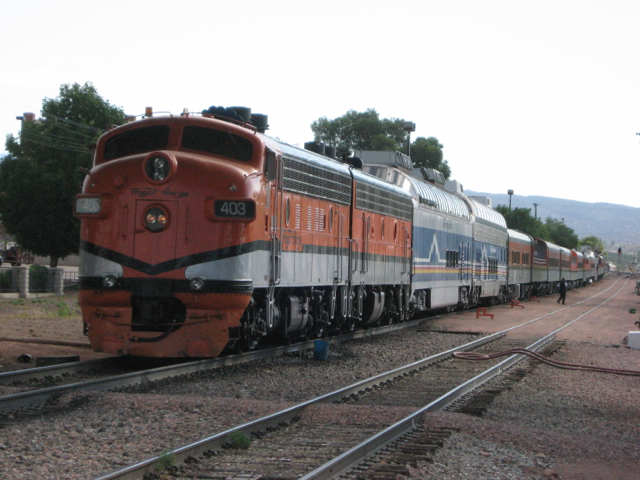 The westbound Royal Gorge train prepares for departure from Caņon City, CO behind former C&NW F7 # 403 on July 27, 2012.
|
 Former Santa Fe full dome 553.
|
 A Royal Gorge coach.
|
 One of two open air cars on our train.
|
 CRRX
power car 15462 has been retrofitted with a cab control compartment
since its service with Canadian National and VIA Rail Canada.
|
 A steam engine is displayed in front of the Caņon City depot.
|
 A fly fisherman in the Arkansas River just outside town.
|
 Mountain scenery begins moments after departure.
|
 Mountain goats seen from the left side of the train.
|
 Rafters begin their journey beside a US Highway 50 bridge near Parkdale.
|
 Inside
dome car 553, a former Santa Fe car which later served on the original
Auto-Train and on Holland America/Westours service in Alaska.
|
 The view from the dome car.
|
 The bar car on the Royal Gorge train.
|
 Modified power car 15462, outfitted with a cab control compartment, leads the return trip to Caņon City.
|
 Continuing eastward along the Arkansas River.
|
 A hi-rail truck follows the eastbound train.
|
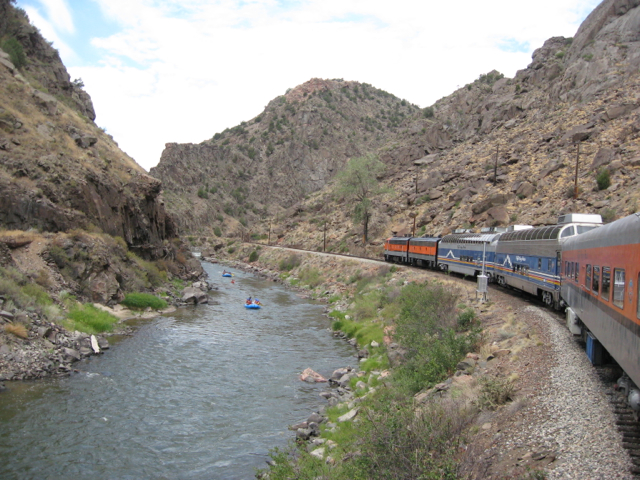 Passing several whitewater rafts on the Royal Gorge route.
|
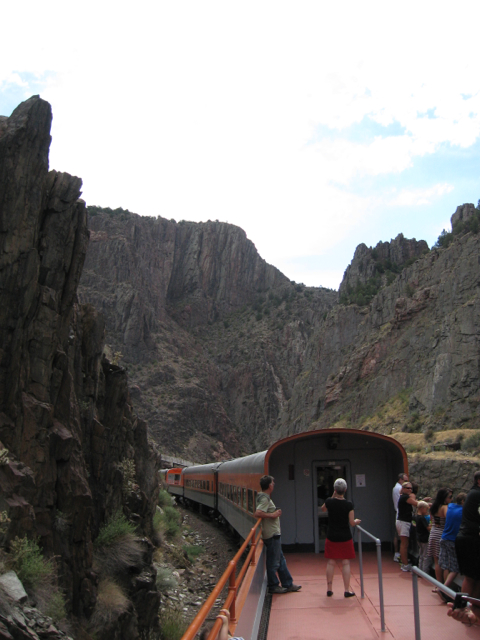 An open air car is enveloped by mountains in the Royal Gorge.
|
 A kayak helps the rafts navigate the whitewater.
|
 The
subtle differences between a Milwaukee Road Super Dome (next to the
engines) and a Santa Fe full dome can be seen in the curved dome glass.
|
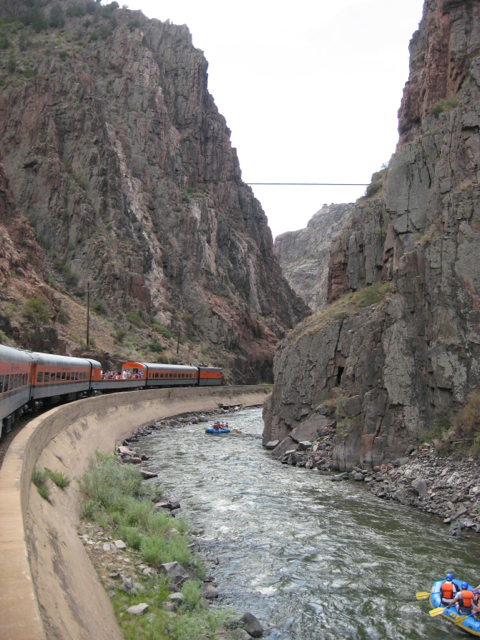 The gorge narrows as the train prepares to pass below the Royal Gorge Bridge.
|
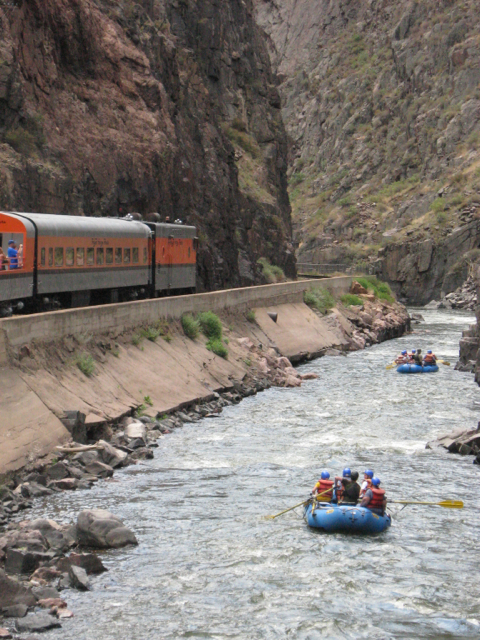 The power car leads the way through the Royal Gorge.
|
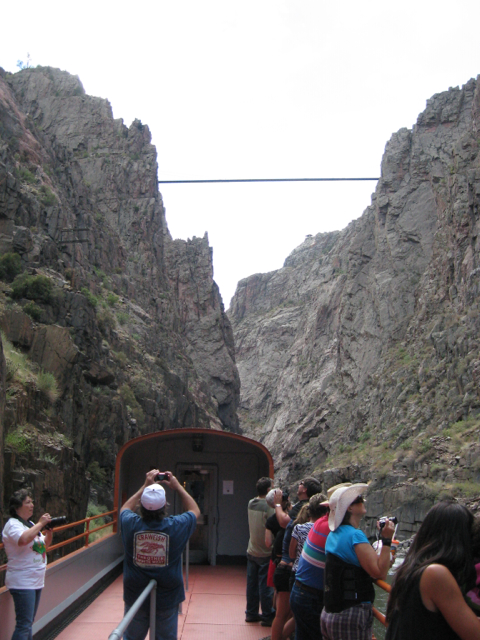 One can appreciate the height of the bridge from an open car.
|
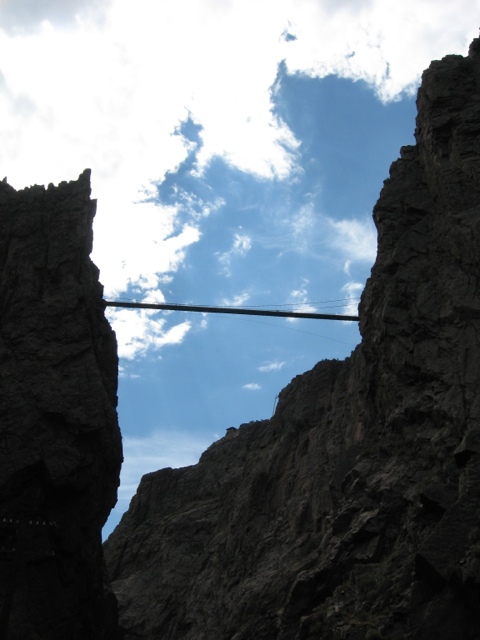 The bridge appears suspended between mountain peaks.
|
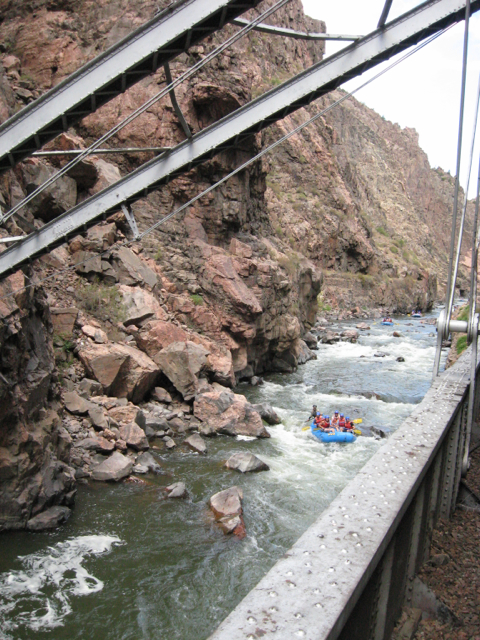 Cables and supports hold the hanging railroad bridge which hangs out over the river.
|
 More rafters enjoy the whitewater ride.
|
 These rafting enthusiasts are tackling a challenging path along the Arkansas River.
|
 Every curve offers more scenic views of the Royal Gorge.
|
 The Royal Gorge Bridge provides its visitors a view from 1,000 feet above the gorge.
|
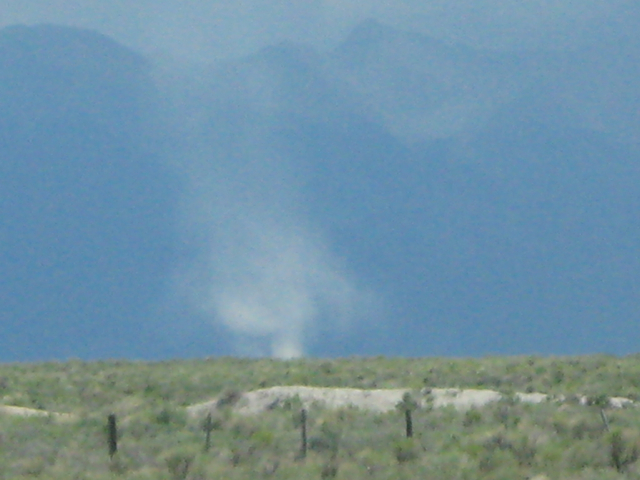 A dust devil encountered on Highway 17 north of Hooper, CO.
|
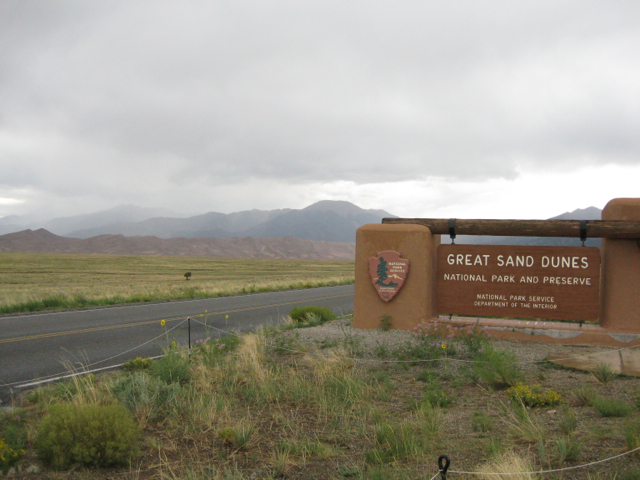 The sand dunes are visible to the left of the entrance sign to the national park.
|
 The dunes display a dark color due to rains that fell minutes earlier.
The Sangre de Cristo Mountains stand behind the dunes. |
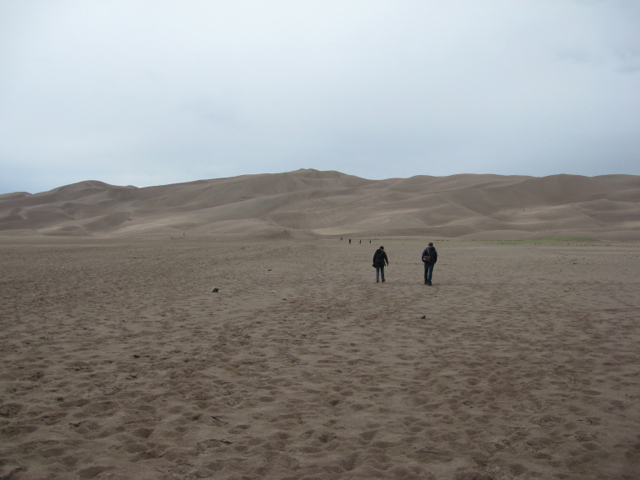 The size of the sand dunes is massive compared to hikers who appear as specks.
|
 Great Sand Dunes National Park’s dunes present a challenge to climb.
|
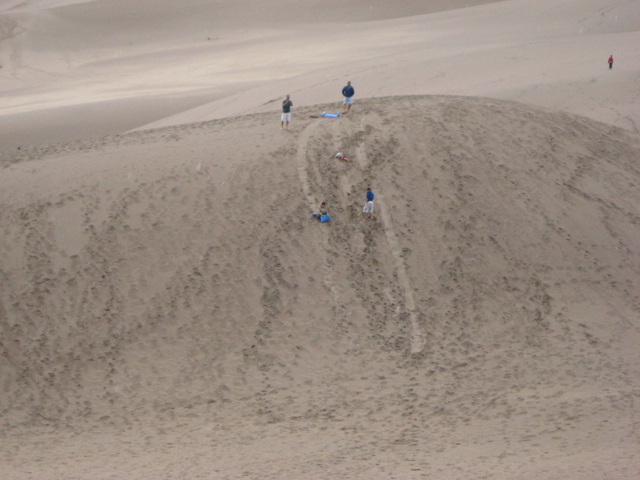 Many visitors like to slide down the sand dunes.
|
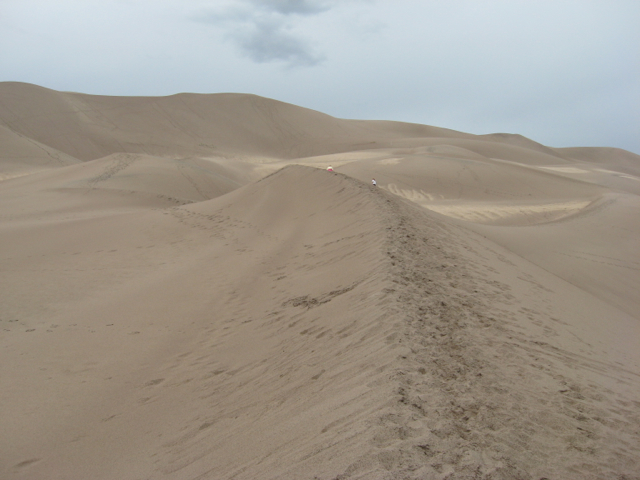 A ridge on the side of one of the dunes.
|
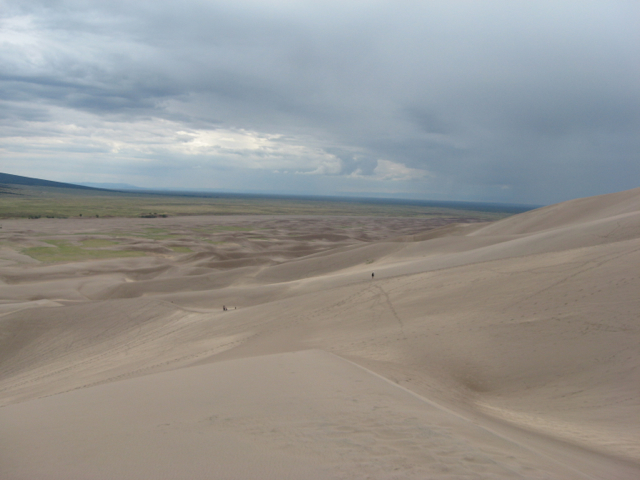 The view from near the top of the highest sand dune.
|
 Curious chipmunks abound near the parking lot and boardwalk in Great Sand Dunes National Park.
|